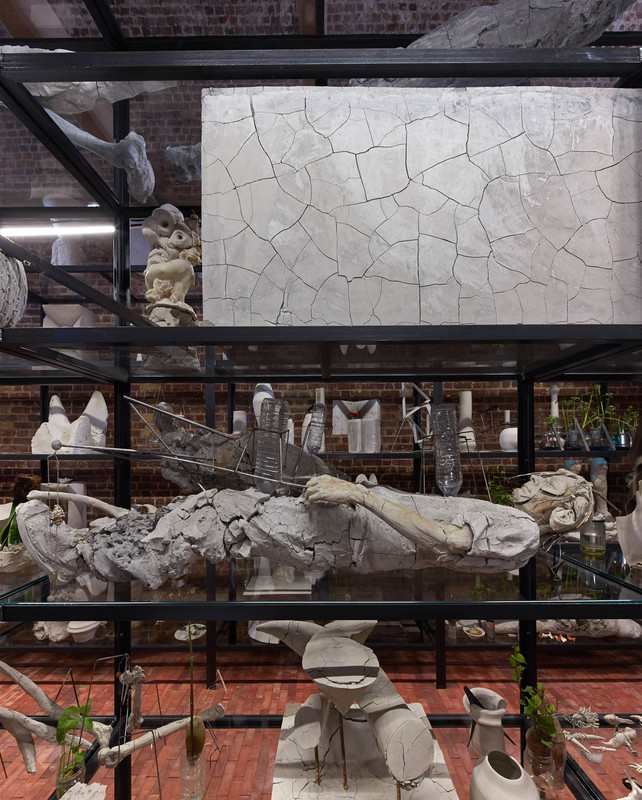Adrián Villar Rojas
28 Sep - 10 Nov 2013
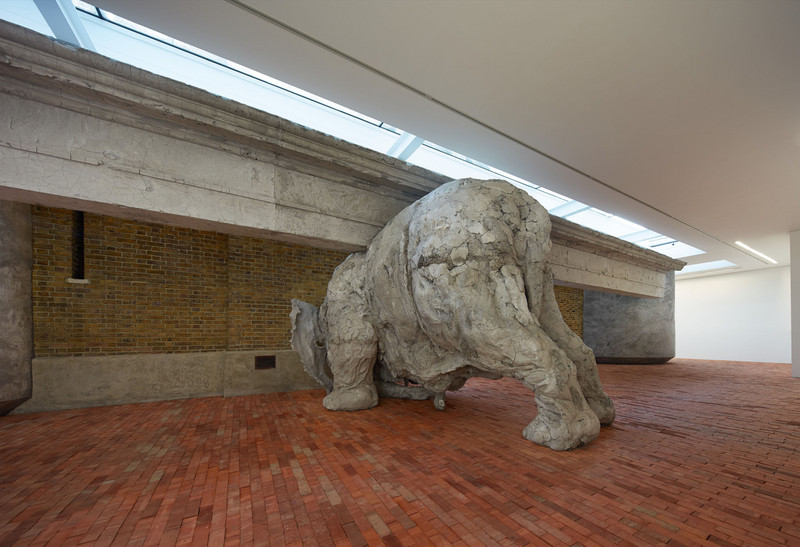
Adrián Villar Rojas
Installation view, Today We Reboot The Planet
Serpentine Sackler Gallery, London
© 2013 Jörg Baumann
Installation view, Today We Reboot The Planet
Serpentine Sackler Gallery, London
© 2013 Jörg Baumann

Adrián Villar Rojas
Installation view, Today We Reboot The Planet
Serpentine Sackler Gallery, London
© 2013 Jörg Baumann
Installation view, Today We Reboot The Planet
Serpentine Sackler Gallery, London
© 2013 Jörg Baumann

Adrián Villar Rojas
Installation view, Today We Reboot The Planet
Serpentine Sackler Gallery, London
© 2013 Jörg Baumann
Installation view, Today We Reboot The Planet
Serpentine Sackler Gallery, London
© 2013 Jörg Baumann
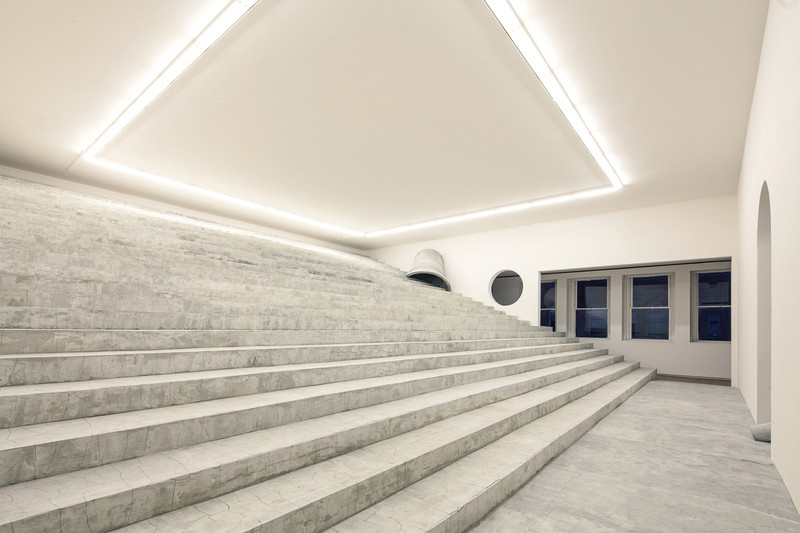
Adrián Villar Rojas
La inocencia de los animales, 2013
Installation view of EXPO 1: New York at MoMA PS1
Courtesy of the artist, Marian Goodman Gallery, New York, Paris and kurimanzutto, mexico city
Photo: Matthew Septimus
© Adrián Villar Rojas
La inocencia de los animales, 2013
Installation view of EXPO 1: New York at MoMA PS1
Courtesy of the artist, Marian Goodman Gallery, New York, Paris and kurimanzutto, mexico city
Photo: Matthew Septimus
© Adrián Villar Rojas

Adrián Villar Rojas
Mi familia muerta (My dead family), 2009
Site specific sculpture
Wood, rocks and clay
300 x 2700 x 400 cm
Ushuaia ́s End of The World Biennale 2nd Edition, Argentina
Cortesy the artist and kurimanzutto
Photo credits: Carla Barbero, Kayne Di Pilato
© Adrián Villar Rojas
Mi familia muerta (My dead family), 2009
Site specific sculpture
Wood, rocks and clay
300 x 2700 x 400 cm
Ushuaia ́s End of The World Biennale 2nd Edition, Argentina
Cortesy the artist and kurimanzutto
Photo credits: Carla Barbero, Kayne Di Pilato
© Adrián Villar Rojas
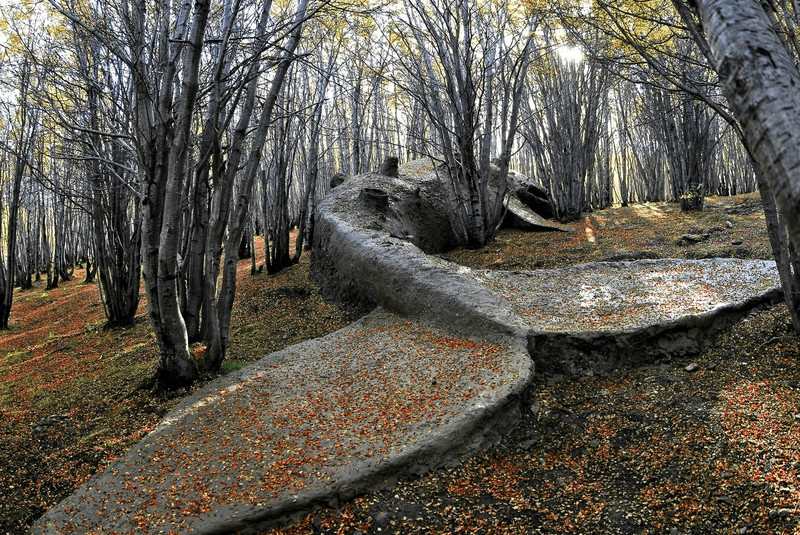
Adrián Villar Rojas
Mi familia muerta (My dead family), 2009
Site specific sculpture
Wood, rocks and clay
300 x 2700 x 400 cm
Ushuaia ́s End of The World Biennale 2nd Edition, Argentina
Cortesy the artist and kurimanzutto
Photo credits: Carla Barbero, Kayne Di Pilato
© Adrián Villar Rojas
Mi familia muerta (My dead family), 2009
Site specific sculpture
Wood, rocks and clay
300 x 2700 x 400 cm
Ushuaia ́s End of The World Biennale 2nd Edition, Argentina
Cortesy the artist and kurimanzutto
Photo credits: Carla Barbero, Kayne Di Pilato
© Adrián Villar Rojas

Adrián Villar Rojas
Poemas para terrestres (Poems for Earthlings), 2011
Site specific sculpture
Clay (unfired), cement, burlap, metal, wood
9000 cm long, widest diameter 400 cm , smaller diameter 40 cm
Jardin des Tuileries, Paris.
Courtesy the artist and SAM Art Projects, Paris
Photo credits: Marc Domage
© Adrián Villar Rojas
Poemas para terrestres (Poems for Earthlings), 2011
Site specific sculpture
Clay (unfired), cement, burlap, metal, wood
9000 cm long, widest diameter 400 cm , smaller diameter 40 cm
Jardin des Tuileries, Paris.
Courtesy the artist and SAM Art Projects, Paris
Photo credits: Marc Domage
© Adrián Villar Rojas
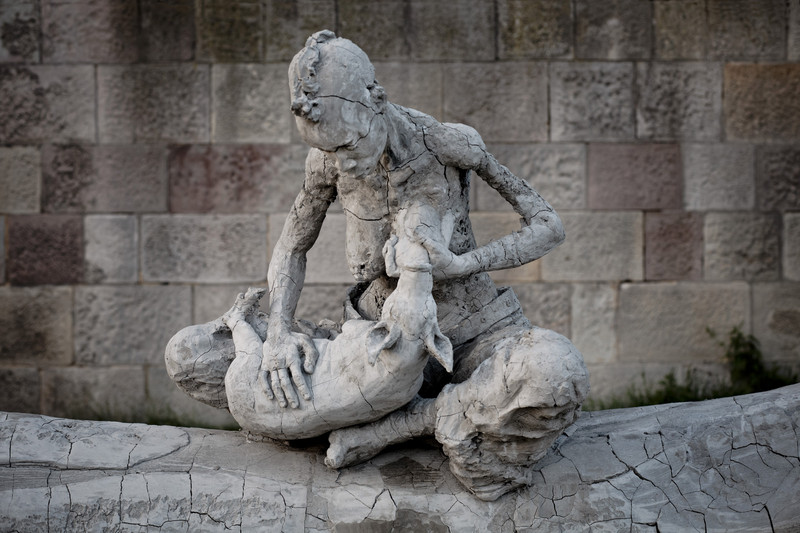
Adrián Villar Rojas
Return The World, 2012
Site specific sculpture,
24000 x 600 x 80 cm,
Baghe Baur Gardens, dOCUMENTA (13) Kabul, Afghanistan
Courtesy the artist, kurimanzutto and dOCUMENTA (13)
Photo Credits: Roman Mensing
© Adrián Villar Rojas
Return The World, 2012
Site specific sculpture,
24000 x 600 x 80 cm,
Baghe Baur Gardens, dOCUMENTA (13) Kabul, Afghanistan
Courtesy the artist, kurimanzutto and dOCUMENTA (13)
Photo Credits: Roman Mensing
© Adrián Villar Rojas

Adrián Villar Rojas
Harto de adioses (de la serie) Sick of Goodbyes (for the series), 2010
Airbrush, acrylic and lacquer on motorcycle helmet
© Adrián Villar Rojas
Harto de adioses (de la serie) Sick of Goodbyes (for the series), 2010
Airbrush, acrylic and lacquer on motorcycle helmet
© Adrián Villar Rojas
ADRIÁN VILLAR ROJAS
Today We Reboot the Planet
28 September - 10 November 2013
The new Serpentine Sackler Gallery opens with an extraordinary site-specific installation by the young Argentinian artist Adrián Villar Rojas, in which the space has been re-imagined as a fossilised world of ruins and ancient monuments.
From a sculpture of a mummified Kurt Cobain to a crumbling elephant, 33 year-old Villar Rojas combines pop culture, science fiction and quantum mechanics with the natural world to create a contemporary Pompeii. Fabricated almost entirely out of mud, clay and brick, this grey and dusty vision of the future offers a fantastical comment on the fragility of the world’s ecology.
One of the most exciting artists to have emerged in recent years, Villar Rojas has become renowned for his large-scale sculptural works, predominantly made in clay and brick. This exhibition is one of two opening shows for the newly launched Serpentine Galleries. The other, Marisa Merz, runs concurrently at the Serpentine Gallery.
Working with a team of collaborating builders, sculptors and engineers, Villar Rojas tests the limits of clay to create an apparently fossilised world of ruins and ancient monuments that plays with the concept of time, history, modernity and the future. Overarching connections between his projects create a larger narrative, with themes and forms reappearing and reconfiguring themselves over time. As with My Dead Family, which saw him create a 28-metre-long sculpture of a whale stranded in a forest for the Biennial at the End of The World, each installation can seem as if is the last chapter of an unknown mythical saga.
For his first exhibition in the UK, Villar Rojas re-casts this potent mix of myth and imagination responding to the Serpentine Sackler Gallery, a former munitions store built in 1805. Taking inspiration from the brick-vaulted Gunpowder Rooms that sit at the centre of the building, the artist reimagines the architecture and original purpose of the new Gallery at the very moment it is revealed to the world for the first time. Drawing on the artist's self-declared fascination with topics as diverse as science fiction, comic books, popular music and quantum mechanics, his often fantastical sculptures appear as relics from an invented antiquity or an imagined future.
A key element to his installation at the Serpentine Sackler Gallery is the implicit presence of another parallel site of production, a traditional brickworks in Rosario, Argentina, which - alongside its daily production of bricks - functions as a laboratory of artistic experimentation for Villar Rojas. The farm produces handmade bricks, using the ancient method of mixing the raw materials in the ground using animal power before hand firing them in glowing pyramidal towers. The immediacy and rawness of this production process, which originally drew Villar Rojas to the brickworks, results in objects and constructions that appear as 'ghosts' in the exhibition. This return to an old and traditional practice - similar to that of returning to clay as material and sculpture as a form - is the artist's path for inventing a symbolic world that speaks to our imagination as much as it does to the politics of a global economy.
Villar Rojas is best known for his recent projects at dOCUMENTA(13) in Kassel, Germany, for the Argentinian Pavilion at the 54th Venice Art Biennale and the monumental installation in the Jardin Tuileries next to the Musée de Louvre in Paris (2011), Expo 1, MoMA PS1 New York. His work is included in major collections internationally.
Today We Reboot the Planet
28 September - 10 November 2013
The new Serpentine Sackler Gallery opens with an extraordinary site-specific installation by the young Argentinian artist Adrián Villar Rojas, in which the space has been re-imagined as a fossilised world of ruins and ancient monuments.
From a sculpture of a mummified Kurt Cobain to a crumbling elephant, 33 year-old Villar Rojas combines pop culture, science fiction and quantum mechanics with the natural world to create a contemporary Pompeii. Fabricated almost entirely out of mud, clay and brick, this grey and dusty vision of the future offers a fantastical comment on the fragility of the world’s ecology.
One of the most exciting artists to have emerged in recent years, Villar Rojas has become renowned for his large-scale sculptural works, predominantly made in clay and brick. This exhibition is one of two opening shows for the newly launched Serpentine Galleries. The other, Marisa Merz, runs concurrently at the Serpentine Gallery.
Working with a team of collaborating builders, sculptors and engineers, Villar Rojas tests the limits of clay to create an apparently fossilised world of ruins and ancient monuments that plays with the concept of time, history, modernity and the future. Overarching connections between his projects create a larger narrative, with themes and forms reappearing and reconfiguring themselves over time. As with My Dead Family, which saw him create a 28-metre-long sculpture of a whale stranded in a forest for the Biennial at the End of The World, each installation can seem as if is the last chapter of an unknown mythical saga.
For his first exhibition in the UK, Villar Rojas re-casts this potent mix of myth and imagination responding to the Serpentine Sackler Gallery, a former munitions store built in 1805. Taking inspiration from the brick-vaulted Gunpowder Rooms that sit at the centre of the building, the artist reimagines the architecture and original purpose of the new Gallery at the very moment it is revealed to the world for the first time. Drawing on the artist's self-declared fascination with topics as diverse as science fiction, comic books, popular music and quantum mechanics, his often fantastical sculptures appear as relics from an invented antiquity or an imagined future.
A key element to his installation at the Serpentine Sackler Gallery is the implicit presence of another parallel site of production, a traditional brickworks in Rosario, Argentina, which - alongside its daily production of bricks - functions as a laboratory of artistic experimentation for Villar Rojas. The farm produces handmade bricks, using the ancient method of mixing the raw materials in the ground using animal power before hand firing them in glowing pyramidal towers. The immediacy and rawness of this production process, which originally drew Villar Rojas to the brickworks, results in objects and constructions that appear as 'ghosts' in the exhibition. This return to an old and traditional practice - similar to that of returning to clay as material and sculpture as a form - is the artist's path for inventing a symbolic world that speaks to our imagination as much as it does to the politics of a global economy.
Villar Rojas is best known for his recent projects at dOCUMENTA(13) in Kassel, Germany, for the Argentinian Pavilion at the 54th Venice Art Biennale and the monumental installation in the Jardin Tuileries next to the Musée de Louvre in Paris (2011), Expo 1, MoMA PS1 New York. His work is included in major collections internationally.

